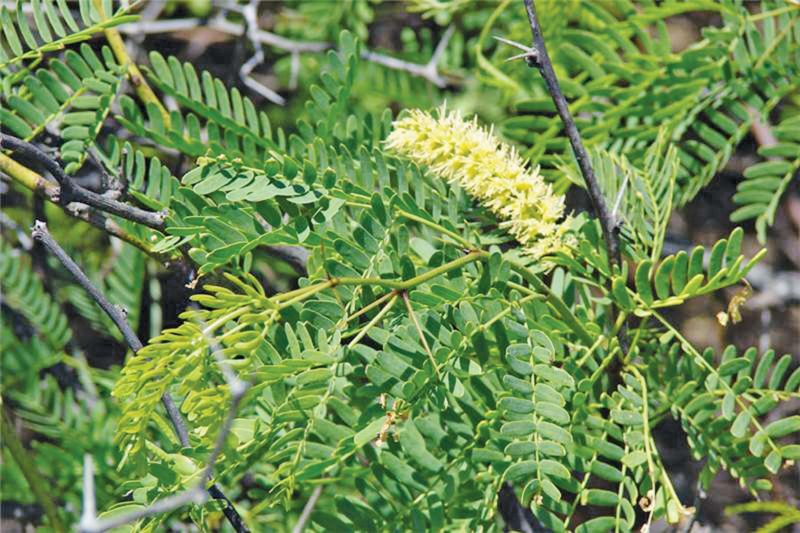Invasive species pose threat to ecosystem of Anna university
Anna University is highly influenced by Guindy National Park as many species including jackals and porcupines coming from there.

Chennai: Some of the invasive and exotic pieces like Prosopis juliflora or Velikathan, Parthenium hysterophorus (Railway plant) and Lantana Camara, a perennial shrub, are posing a major threat to the eco-system of Anna University and soon they may replace much local flora and fauna, finds a biodiversity survey conducted by the university.
“While parthenium weed has a luxuriant growth all over the vacant places at the university, the Prosopis Julifora is actually spreading fast and immediately need to be checked to save the existing flora, fauna eco-system inside the university,” the survey report said.
For the first time, Anna University has prepared a biodiversity register for its sprawling 185-acre Guindy campus recording the flora and fauna population at the varsity’s main campus.
It has been prepared during the “Green Skill Development Programme” which is being conducted at the university with the support of the union ministry of environment, forests and climate change.
“We have recorded around 526 species in flora during the biodiversity survey. More than 50 per cent of the trees, grasses, herbs, climbers found in the campus are non-natives,” said professor S. Srinivasalu co-ordinator, ENVIS - IOM and director, Institute for Ocean Management, Anna University.
Only less than 50 per cent of the species of trees found on the campus is native trees like palm and tamarind trees. Some 20 students who were trained in Para-taxonomy conducted the survey recently.
“Among the flora of the campus, nearly 40 per cent of the species found in the campus are herbs. Ten per cent of the non-cultivated plant species that were found were grasses. Shrubs and climbers vary between 10 and 15 per cent, while trees are a mere 5 to 10 per cent,” he added.
The present study has revealed that more than half of exotic plant species in Anna University spreading naturally were intentionally introduced and the rest is an unintentional introduction. It is also reported that most of these exotic species that endanger native ecosystems were first introduced for horticultural purposes.
The report also mentions the presence of the medicinal plants inside the College of Engineering, Guindy. “At present, the medicinal plants found in the campus is not utilized. Medicinal plant garden is the need of the hour to conserve some of the important plans for the future generation,” it said.
K. Venkatraman, former director, Zoological Survey of India, Kolkata, who supervised the survey of fauna said, “During the night, there is a separate activity of animals happening inside as mongoose bringing their offspring. We also spotted golden jackals, porcupines on the campus.”
Anna University is highly influenced by Guindy National Park as many species including jackals and porcupines coming from there. There is also local migration taking place as birds from Pallikaranai marshland is coming for roosting to the campus.
“We have described 120 common plants and 150 common species of animals in the register. Out of which many are alien species. We also registered that 500 trees were fallen during the Vardah cyclone,” he added.
The critically endangered Blackbuck once seen in this campus is no more available. The pigeons have outnumbered the crows during the survey.
He further said it is only the preliminary study to find out what are the species available inside the campus and how many of them are alien species and whether there are any endangered species inside the campus. “We need to do further studies,” he said.
“Biodiversity register of Anna University” is likely to be circulated among the students and faculty members to make them aware of the existing pieces inside the university.
During the Vardah Cyclone, of 1,000 trees 500 trees were ravaged and 350 trees were uprooted. The non-native trees did not survive the fury of the cyclone while the native trees like palm trees have survived. Citing it, the report also recommended the planting of native species of trees.
Invasive species of flora found in AU
Parthenium hysterophorus, (Railway Plant) which is an exotic species from Tropical America was first reported in India in 1951 from Maharashtra. The weed is an aggressive colonizer of degraded areas such as fallow wastelands, roadsides and overgrazed pastures. In Anna University campus they have a luxuriant growth in all over the vacant places. They found more in the staff quarters of Anna University.
 Prosopis juliflora
Prosopis juliflora
Lantana camara, is a species of flowering plant and one of the ten worst weeds of the world, is a native to tropical and subtropical America. Lantana was brought to India by the British in 1807 as an ornamental shrub for the Calcutta Botanical Garden. In Anna University Campus they are mostly seen as ornamental
or found mostly in the vacant land all over the campus.
Prosopis juliflora, is a shrub was introduced in India in the last century as a species for afforestation of degraded land. But over the years, it has emerged as noxious invader that can grow in various ecosystems. It wipes out plant species in its surroundings.
 Parthenium hysterophorus
Parthenium hysterophorus
In Anna University Campus they are more in number. Their luxuriant growth affects most of the other native species. They are fast spreading in the campus and soon they may replace many local flora and fauna. Their unabated growth will be a challenging task for the University.

